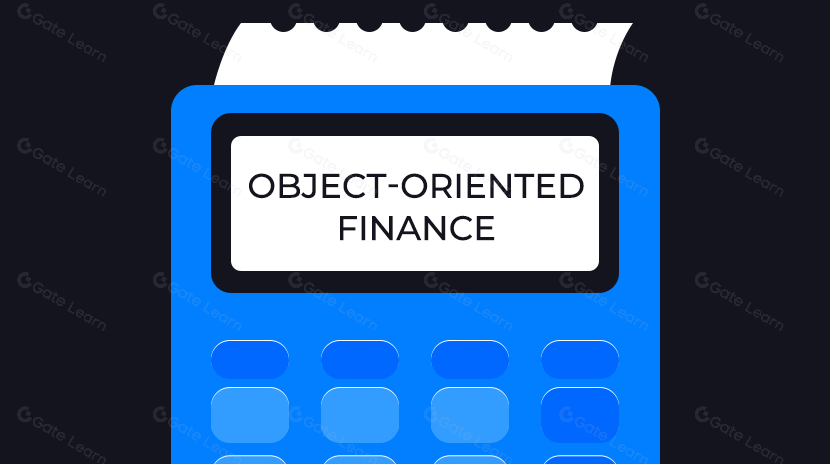Carv là gì?
CARV Protocol là một Giao thức Danh tính và Dữ liệu phi tập trung (IDL) cho phép người dùng sở hữu, kiểm soát, xác minh và tiếp cận dữ liệu của họ. Nó nhấn mạnh vào các ngành công nghiệp game và trí tuệ nhân tạo và sử dụng CARV ID làm hệ thống quản lý danh tính chính. Kể từ khi ra mắt, CARV Play, sản phẩm mũi nhọn của công ty, đã đăng ký hơn 9,5 triệu người dùng và gần 3 triệu CARV ID trên chuỗi thông qua các chiến dịch trong game khác nhau. CARV Protocol có hơn 2,1 triệu ví hoạt động duy nhất tương tác trên các mạng được hỗ trợ.
Carv là gì?
Carv là một nền tảng phi tập trung kết hợp chơi game, trí tuệ nhân tạo (AI) và công nghệ blockchain và được cung cấp bởi mã thông báo CARV. Các cá nhân có thể duy trì quyền sở hữu danh tính và dữ liệu kỹ thuật số của họ bằng cách sử dụng các công nghệ như bằng chứng không có kiến thức (ZKP), kiến trúc blockchain mô-đun và cơ sở hạ tầng được hỗ trợ bởi AI. Nền tảng này cho phép quản lý dữ liệu, kiếm tiền và ứng dụng trong hệ sinh thái trò chơi, khung đào tạo AI và giao thức DeFi. Giao thức CARV đóng vai trò là nền tảng kỹ thuật của nền tảng. Nó có một hệ thống thông tin xác thực dựa trên bằng chứng, không có kiến thức cho phép người dùng tạo thông tin đăng nhập có thể xác minh từ cả giao dịch trên chuỗi và ngoài chuỗi. Các thông tin đăng nhập này được lưu trong kho dữ liệu, mô-đun lưu trữ do người dùng kiểm soát được bảo vệ bằng mã hóa đầu cuối và mã định danh phi tập trung (DID).
Carv hoạt động trong lĩnh vực AI và blockchain với ba thành phần chính. Đầu tiên là một hệ thống nhận dạng tự chủ cho phép người dùng tạo và trao đổi thông tin đăng nhập đã được xác minh dựa trên các hoạt động như thành tích chơi game hoặc kết nối xã hội. Các thông tin đăng nhập này được bảo vệ bằng các phương tiện mật mã, đảm bảo tính xác thực chống giả mạo. Thành phần thứ hai là một thị trường để kiếm tiền từ dữ liệu người dùng ẩn danh, có thể được cấp phép cho các bên thứ ba như nhà phát triển AI, studio trò chơi và nhà quảng cáo. Thị trường này ưu tiên quyền riêng tư, cho phép giao dịch dữ liệu mà không tiết lộ thông tin người dùng thô. Thành phần thứ ba là cơ sở hạ tầng tác nhân AI, bao gồm các hệ thống tự trị tiến hành các hoạt động thay mặt cho người dùng. Các tác nhân này hoạt động trên nhiều ứng dụng, chẳng hạn như quản lý danh mục đầu tư DeFi và tối ưu hóa tài sản trong trò chơi, sử dụng dữ liệu aggreGate.comd để đạt được các mục tiêu đã nêu. Cơ sở hạ tầng của Carv được cung cấp bởi Giao thức CARV, một blockchain mô-đun được thiết kế rõ ràng cho các trường hợp sử dụng chơi game và AI. Hợp tác với Consensys, HashKey và các studio trò chơi được thành lập khác giúp đẩy nhanh sự phát triển của giao thức.

Lịch sử của Carv
CARV được ra mắt bởi Chloe Gu và Victor Yu vào năm 2022 để cung cấp cho mọi người quyền kiểm soát về danh tính và dữ liệu của họ trên Web2 và Web3. CARV ban đầu được truyền cảm hứng bởi những ý tưởng về xã hội phi tập trung (DeSoc) và Soulbound Tokens (SBTs) của Vitalik Buterin, và kế hoạch ban đầu là tích hợp những khái niệm này vào Web3 trước khi hẹp lại sự chú ý vào lĩnh vực gaming và AI. Sau khi hoàn thành Chương trình tăng tốc Blockchain Cypher của UPenn Wharton vào tháng 5 năm 2022, CARV phát triển Carv Play. Nền tảng này cung cấp giao diện thống nhất cho các trò chơi khác nhau. Để giải quyết vấn đề phân mảnh danh tính và dữ liệu trong gaming, CARV đề xuất tiêu chuẩn token ERC-7231 vào tháng 6 năm 2023, kết hợp ID Web2 và Web3 thành một hồ sơ dựa trên NFT duy nhất. ERC-7231 đã được phê duyệt vào tháng 2 năm 2024.
Vào tháng 12 năm 2023, CARV đã công bố CARV ID, một giải pháp danh tính được cung cấp bởi ERC-7231 kết hợp danh tính Web2 và Web3 của người dùng thành một hồ sơ duy nhất. Cùng tháng đó, CARV giới thiệu chương trình Data-to-Earn, cho phép người dùng quản lý và tiếp thị dữ liệu của họ thông qua việc tham gia các chiến dịch thu thập dữ liệu theo ý muốn. Alphanet, mạng thử nghiệm của giao thức, đã được CARV phát hành vào tháng 6 năm 2024, trước khi ra mắt mainnet. Đội ngũ cũng tổ chức bán nút trong cùng tháng đó, cung cấp 100,000 nút xác minh cho cộng đồng, cho phép cộng đồng tham gia quá trình xác minh dữ liệu của giao thức. Đội dự án đã thu được hơn 35 triệu đô la thông qua việc bán 38,000 nút xác minh thông qua bán nút.
Dây chuyền AI Agentic được giới thiệu cùng với việc ra mắt mainnet của dự án vào tháng 1 năm 2024. Subnet này được dành riêng để đào tạo và triển khai các mô hình AI với các bộ dữ liệu được người dùng ủy quyền. Vào tháng 3 năm 2024, Consensys và HashKey thông báo chương trình tăng tốc 50 triệu đô la để hỗ trợ các ứng dụng gaming và AI dựa trên Giao thức CARV. Carv giới thiệu Khung kiến trúc Đào tạo AI Phi tập trung (D.A.T.A.) ba tháng sau đó. Công nghệ này cho phép học máy liên minh trong khi bảo vệ quyền riêng tư dữ liệu bằng cách sử dụng tính toán phi tập trung.
Đặc điểm của Carv
Agentic Chain
Agentic Chain, một subnet được thiết kế một cách rõ ràng cho các hoạt động trí tuệ nhân tạo, là một khía cạnh giao thức quan trọng. Thành phần này cho phép học liên minh, một kỹ thuật để huấn luyện mô hình trí tuệ nhân tạo trên các nút phân tán mà không cần gửi dữ liệu thô từ hầm người dùng. Các nhà phát triển có thể sử dụng aggreGate.comd, thông tin ẩn danh để huấn luyện mô hình trong khi người dùng giữ quyền kiểm soát dữ liệu đầu vào của họ.
Khung D.A.T.A.
Khung D.A.T.A. được xây dựng trên cơ sở hạ tầng này bằng cách cho phép người dùng tạo các liên minh dữ liệu, gộp các luồng dữ liệu ẩn danh để cấp phép cho bên thứ ba. Hợp đồng thông minh tự động hóa bồi thường cho dữ liệu đầu vào bằng cách phân phối doanh thu theo các điều khoản đã thiết lập.
Các nút xác minh
Tính năng nút xác minh xác nhận các chứng chỉ TEE của giao thức, đảm bảo dữ liệu di chuyển một cách an toàn và riêng tư qua các lớp của nó. Để vận hành một nút xác minh, người dùng phải trước tiên có được một giấy phép nút hoặc chấp nhận ủy quyền từ chủ sở hữu nút được cấp giấy phép. Mỗi giấy phép là một NFT, cho phép người giữ giấy phép chạy các nút xác minh và kiếm lợi nhuận thông qua giao thức CARV. Cuộc đấu giá nút đầu tiên bắt đầu dưới dạng giai đoạn danh sách cho phép vào ngày 3 tháng 6 năm 2024, tiếp theo là một cuộc bán đấu giá công khai vào ngày 5 tháng 6 năm 2024.
Công nghệ của Carv
CARV Protocol là một Giao thức Danh tính Phi tập trung và Tầng Dữ liệu (IDL) với CARV ID ở trung tâm, cho phép quản lý danh tính an toàn trên chuỗi. Ngoài việc nhận diện, IDL cung cấp tính toán không cần phép, xác minh và lưu trữ dữ liệu an toàn, dẫn đến một hệ sinh thái có khả năng mở rộng và an toàn. Thay vì mô hình chuỗi khối tiêu chuẩn, IDL sử dụng phương pháp nhiều chuỗi nhẹ với hợp đồng thông minh phân phối trên nhiều mạng Layer-1 và Layer-2. Giao thức cũng sử dụng một khung modular với bốn lớp có thể tùy chỉnh chuyên về quản lý luồng dữ liệu end-to-end.

Lớp Định Danh
Lớp danh tính sử dụng tiêu chuẩn ERC-7231 và là điểm nhập chính cho danh tính người dùng và tổng hợp dữ liệu. Tiêu chuẩn này dựa trên tiêu chuẩn mã thông báo ERC-721 bằng cách liên kết danh tính Web2 và Web3 - chẳng hạn như tài khoản mạng xã hội, ví blockchain và DIDs - với mã thông báo phi thay đổi (NFTs) và mã thông báo soulbound (SBTs). Để tương tác với hệ thống, danh tính Web2 và Web3 của người dùng được kết hợp thành một CARV ID, một hồ sơ NFT tập trung được phát hành dưới dạng mã thông báo ERC-7231 trên blockchain. Hồ sơ NFT thống nhất này cho phép người dùng quản lý danh tính của mình trên nhiều nền tảng, cho phép quản lý sở hữu dữ liệu và tiền hoa quyền của người dùng.
Lớp lưu trữ dữ liệu
Lớp lưu trữ cung cấp sự linh hoạt lưu trữ dữ liệu cho người tiêu dùng bằng cách cho phép lựa chọn phân tán và tập trung. Dữ liệu được tổng hợp trên lớp nhận dạng được mã hóa mặc định và được lưu trữ trên lớp lưu trữ. Người dùng có thể sử dụng giải pháp lưu trữ gốc của giao thức, Carv DB, được xây dựng trên Eigenlayer AVS, các giải pháp phân tán như Greenfield dựa trên BNB, hoặc các giải pháp tập trung như AWS S3. Với cách tiếp cận linh hoạt của IDL đối với việc lưu trữ được bảo mật một cách tự nhiên, người dùng có thể cân nhắc quyền riêng tư, chi phí và tính sẵn có.
Các Lớp Tính Toán và Huấn Luyện
Lớp này xử lý và phân tích dữ liệu aggreGate.comd, tiết lộ thông tin hiện thời có thể được sử dụng để huấn luyện các mô hình trí tuệ nhân tạo. Để đảm bảo rằng dữ liệu được xử lý an toàn và riêng tư, lớp này sử dụng Môi trường Thực thi Đáng tin cậy (TEE) như Intel SGX và Chứng minh Sự không Biết (zk-SNARK) cho việc xác minh. Giao thức chạy một cụm nút TEE điều phối tính toán bằng cách sử dụng Intel SGX để cung cấp chứng nhận có thể xác minh.
Lớp Thực Thi
Lớp thực thi đóng vai trò là cột sống hoạt động của giao thức, bao gồm các hợp đồng thông minh triển khai trên một số mạng Layer-1 và Layer-2. Lớp này quản lý tất cả các tương tác giữa người dùng, node và các thành phần khác của giao thức. Nó giám sát logic kinh doanh chính của giao thức, diễn dịch và thực thi dữ liệu được tạo ra từ lớp tính toán và phân phối phần thưởng tùy thuộc vào các hoạt động node được xác nhận.
Lớp Xác minh
Lớp xác minh thêm bảo mật cho các hoạt động của giao thức, đảm bảo rằng nó vẫn giữ tính phi tập trung. Lớp này chứa các nút xác minh do cộng đồng vận hành để xác minh các chứng chỉ được tạo ra bởi các nút TEE trong các lớp tính toán và đào tạo.
Sản phẩm của Carv
Carv Play

CARV Play là sản phẩm chính của CARV, một ứng dụng di động theo hình thức trò chơi dựa trên giao thức CARV. Carv Play có sẵn trên phiên bản Web, iOS và Android. Nó tích hợp trải nghiệm chơi game từ các nền tảng Web2 và Web3 vào một hệ thống dựa trên thông tin xác thực duy nhất. Để tương tác với CARV Play, người chơi phải tạo CARV IDs trên chuỗi, kết nối danh tính chơi game Web2 và Web3 của họ thành một hồ sơ duy nhất. Người dùng cũng có thể nhận tên có thể đọc được bằng ngôn ngữ con người có thể tùy chỉnh được liên kết với CARV IDs của họ thông qua Dịch vụ Tên CARVs.play. Sự tích hợp này kết nối tài khoản chơi game của người dùng (như Steam hoặc Epic Games) với hồ sơ CARV của họ, cho phép họ trưng bày và xác minh thành tựu của mình trên nhiều trò chơi.
CARV Play cung cấp một loạt các hoạt động và nhiệm vụ trong game thông qua đó người chơi có thể kiếm được phần thưởng như GEMs (đơn vị tiền tệ của nền tảng) và các giấy tờ như Huy hiệu Thành tích và Token Lưu trữ Sáng tạo (GATs). Những huy hiệu này công nhận thành tựu của người chơi và cấp quyền truy cập vào các sự kiện độc đáo và ưu đãi đặc biệt trong toàn hệ sinh thái.
Đặc điểm của Carv Play

CARV Pass
CARV Pass là một khái niệm tiên phong trên nền tảng CARV, cho phép người chơi kiếm GEM và truy cập ngay vào các phần thưởng. Nó cung cấp một cuộc phiêu lưu đầy kích thích với các cấp độ quan trọng đầy cơ hội, giải thưởng và bất ngờ. Mỗi mùa, CARV Pass cung cấp bốn nhiệm vụ riêng biệt: hạn chế thời gian, hàng tháng, hàng tuần và mùa. Sau khi hoàn thành các nhiệm vụ, người dùng sẽ kiếm EXP và lên cấp để mở khóa nhiều phần quà khác nhau, bao gồm Power, GEMs, hộp bí ẩn, SBTs, Titles, vé xổ số và nhiều hơn nữa.

GEM hoạt động như một động lực cho CARV Play. Người dùng có thể kiếm được GEM bằng cách tham gia các sự kiện có phần thưởng GEM, mở khóa hộp bí ẩn trong CARV Pass và nhận các khuyến mãi nâng cấp cấp độ. GEM là vé của người dùng để đổi lấy nhiều lợi ích, như các mặt hàng trong trò chơi, tiền mặt, giải thưởng token $CARV, quà tặng vật lý từ CARV Shop và nhiều hơn nữa.
Khám phá trò chơi

CARV bao gồm hơn 600 trò chơi hàng đầu Web2 và Web3, chủ yếu thông qua các đối tác chính thức, và cung cấp cộng đồng game thủ của họ với sự kiện đặc biệt và giải thưởng. Các trò chơi khám phá có thể thu hút người dùng vì chúng dựa trên dữ liệu và đánh giá hợp lệ (chứng chỉ-Gate.comd, với người chơi thực sự) từ những game thủ khác.
Cửa hàng CARV

Cửa hàng CARV cung cấp một loạt các động lực thực tế và ảo, bao gồm máy chơi game, máy tính cá nhân, thẻ quà tặng, NFT trong trò chơi, khung hồ sơ và nhiều hơn nữa. Người dùng có thể mua chúng hoặc tham gia xổ số với GEMs của mình để giành những phần thưởng này.
CARV SVM Chain

CARV SVM Chain là một cơ sở hạ tầng trí tuệ nhân tạo (AI) mang đến khả năng của SVM cho Ethereum. Với tính mở rộng của Solana và tính bảo mật của Ethereum, các đại lý AI bản địa có thể thực hiện sự nhận thức, nhận thức và hành động thông minh dựa trên chủ quyền dữ liệu, đẩy nhanh sự tiến bộ của trí tuệ nhân tạo tổng quát. CARV SVM Chain nổi lên như một cơ sở hạ tầng trí tuệ nhân tạo mang tính đổi mới kết hợp những điểm mạnh nhất của Solana và Ethereum, nâng cao tính mở rộng của Solana Virtual Machine (SVM) với tính bảo mật của Ethereum trong khi tận dụng tính thanh khoản của cả hai hệ sinh thái. Chuỗi SVM cho phép các đại lý AI bản địa quản lý và tương tác với dữ liệu từ đầu đến cuối một cách tự động. Điều này đảm bảo rằng việc truy xuất dữ liệu, xác thực, lưu trữ và xử lý dữ liệu được thực hiện một cách an toàn trong khi duy trì sự riêng tư, cho phép giao tiếp liền mạch và chia sẻ bộ nhớ chung trên các đại lý AI, và bảo vệ sự riêng tư với công nghệ zk và môi trường thực thi tin cậy (TEE).
Làm thế nào để chuỗi Carv SVM hoạt động?
Để sử dụng Chuỗi Carv SVM, người dùng phải hiểu cách kết nối mã thông báo gas, sepolia ETH, với CARV’s SVM testnet và ngược lại. Người dùng cũng phải thiết lập ví phù hợp để sử dụng Carv SVM RPC. Sử dụng ví backpack làm ví dụ:
Bước 1: Người dùng phải tạo ví SVM và thêm nút RPC CARV.
Bước 2: Mở ví Backpack của họ và nhấp vào menu tài khoản ở góc trái trên.
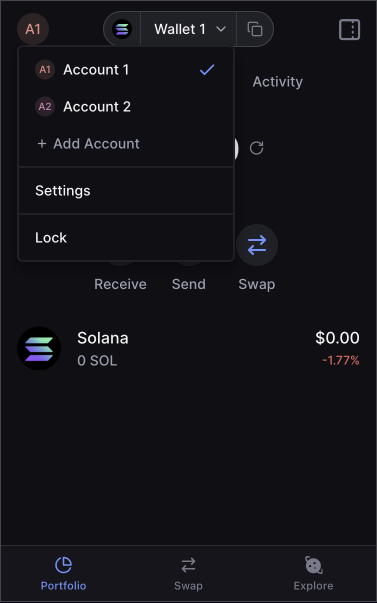
Bước 3: Nhấp vào Cài đặt > Solana.

Bước 4: Nhấp vào Kết nối RPC > Tùy chỉnh.

Bước 5: Dán URL
https://rpc.carv.testnet.soo.network/rpc/carv-McPrlbfMcW0ggpkvr07Tjs2YfviwpHaI. Người dùng sau đó nhấp vào Cập nhật, và CARV SVM RPC hiện đã được thiết lập trong Ba lô. Người dùng nên thấy một “✓” bên cạnh trường RPC Tùy chỉnh.
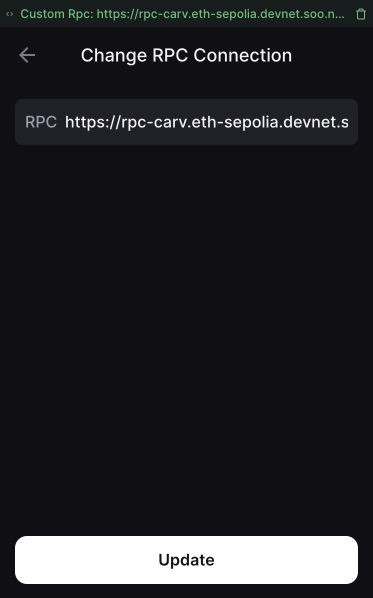
Khung Dữ liệu AI
Khung D.A.T.A nhằm mục tiêu cung cấp cho các đại lý trí tuệ nhân tạo (AI) quyền truy cập mượt mà vào dữ liệu trên chuỗi và ngoài chuỗi chất lượng cao, cho phép họ đưa ra quyết định thông minh và tự động hơn trong các hệ sinh thái phi tập trung. Mô hình này giúp các đại lý trí tuệ nhân tạo hiểu và tương tác với dữ liệu một cách có ý nghĩa. Khung D.A.T.A cung cấp cho các đại lý trí tuệ nhân tạo những cái nhìn mở rộng như hoạt động blockchain, hồ sơ người dùng, lịch sử giao dịch, và phân tích tiên tiến, cho phép họ tiến hóa và thích nghi một cách thông minh.
Ở cốt lõi của nó, D.A.T.A là một triển khai sớm của phương pháp độc đáo của DeepSeek về việc đặt lập trình trước lên hàng đầu trong tự động hóa AI. D.A.T.A cho phép các đại lý AI phát triển các quy trình nhận thức phức tạp mô phỏng các mẫu suy luận giống như con người. Sự tích hợp này cho phép các đại lý xử lý và giải thích dữ liệu qua phân tích đa bước, xác minh kết luận của họ và điều chỉnh chiến lược ra quyết định của mình tùy thuộc vào kết quả. Khung D.A.T.A dễ dàng tích hợp CARV ID, dựa trên tiêu chuẩn ERC-7231, để kết hợp danh tính Web2 của người dùng và hoạt động Web3. Sự tích hợp qua các lĩnh vực này cải thiện khả năng của các đại lý AI để ngữ cảnh hóa hành vi và tương tác của người dùng.
Cổng thông tin CARV

CARV Portal là một bộ công cụ sẵn có cho các đối tác game trong hệ sinh thái CARV. Nó cung cấp một nền tảng trung tâm để quản lý việc tích hợp của họ với CARV Play. Carv Portal cho phép các đối tác game và nhà phát triển tìm kiếm, chấp nhận và giữ chân người chơi trên CARV Play trong khi thu thập thông tin từ dữ liệu người dùng chất lượng cao. Carv Portal cho phép các đối tác game tích hợp mượt mà trò chơi của họ với Giao thức CARV và xử lý các sự kiện trong trò chơi, phần thưởng và tương tác người chơi. Carv Portal cũng cho phép đối tác tạo và triển khai các nhiệm vụ và sự kiện đặc biệt, tận dụng cơ sở người dùng của CARV để tăng cường sự tương tác của người chơi trong cài đặt Web2 và Web3.
CARV ID và Dịch vụ Tên Miền
CARV ID và Dịch vụ Tên Chơi đóng vai trò là cổng thông tin duy nhất của Ars vào Era Data-to-Earn (D2E). CARV ID là một hệ thống ID cách mạng hoạt động cả với danh tính on-chain và off-chain. . Dịch vụ Tên Chơi là một biệt danh có thể đọc được vĩnh viễn và cá nhân hóa cho các địa chỉ blockchain khác nhau. CARV ID bao gồm các thành phần sau:
- ID Aggregator NFT (ERC-7231) và CARV ID: Một ID Aggregator NFT không thể giao dịch sử dụng giao thức ERC-7231 hàng đầu trong ngành được khởi tạo bởi CARV để ghi lại nhiều danh tính của người dùng vào một NFT duy nhất và cho phép tập hợp dữ liệu danh tính đa miền được mã hóa.
- Ví thông minh (ERC-4337) hoặc Tài khoản CARV: Tài khoản này giảm thiểu rào cản tương tác cho người dùng internet thông thường, cho phép thanh toán và hoạt động ví điện tử liên chuỗi một cách mượt mà.
- Tài khoản người ký (EOA): Một tài khoản ký phi tập trung bảo vệ cùng nhau một phần của khóa riêng của Tài khoản Hợp đồng.
Carv ID cho phép người dùng thu thập, di chuyển và tích luỹ ví trên chuỗi, tài khoản ngoài chuỗi và danh tính tại một nơi. CARV khởi xướng ERC7231, một phần mở rộng của ERC721. Họ cũng có thể quản lý, di chuyển và thực hiện giá trị phát sinh từ việc sử dụng dữ liệu cá nhân trong khi bảo vệ quyền riêng tư.
Carv Token ($CARV) là gì?
Đồng tiền CARV phục vụ như tài sản tiện ích và quản trị gốc của hệ sinh thái. Nó thanh toán cho các dịch vụ như hoạt động của đại lý trí tuệ nhân tạo, chi phí cấp phép dữ liệu và quy trình xác minh thông tin. Người giữ token tham gia vào việc lựa chọn quản trị, như cải tiến giao thức và thay đổi chính sách cho các liên minh dữ liệu. Hơn nữa, CARV có thể được đặt cọc để bảo vệ Chuỗi Agentic, với các thành viên nhận được động lực thông qua phí mạng.
CARV Tokenonics

Tổng số lượng token CARV được giới hạn là 1 tỷ, sẽ được phát hành một cách dần dần trong vòng bốn năm. Những token này được phân bổ một cách có chọn lọc để tăng cường sự tham gia của cộng đồng và sự bền vững của dự án.
- Các Node & Cộng đồng (50.00%): Đặt ra quỹ để khuyến khích sự tham gia của node và sự tương tác của cộng đồng thông qua các chiến dịch khác nhau.
- Nhóm sáng lập và Cố vấn (khoảng 19,46%): Dành cho các nhà sáng lập, người đóng góp và cố vấn.
- Nhà đầu tư sớm (9,25%): Bao gồm nhà đầu tư hạt giống và chiến lược sớm trong CARV.
- Hệ sinh thái & Kho bạc (9.00%): Được dành riêng cho quỹ cộng đồng CARV.
- Quỹ Gọi Vốn Riêng (8.30%): Được phân bổ cho các nhà đầu tư Series A và các nhà đầu tư riêng tiềm năng.
- Thanh khoản (4.00%): được sử dụng để cung cấp thanh khoản tại TGE.
Tiện ích Token
- Gas Token: Bao gồm chi phí tính toán mạng của các nút blockchain.
- Sự kết hợp thanh khoản: Ghép cặp token đại lý AI trong hồ chứa thanh khoản.
- Đơn vị thanh toán: Token cho phép giao dịch trong hệ sinh thái CARV, như chi phí gas cho các hoạt động đa chuỗi và mua tài sản trong game.
- Kiểm soát Truy cập: Cho phép các đại lý và dự án trí tuệ nhân tạo truy cập vào dịch vụ giao thức CARV như hồ sơ người dùng thống nhất.
- Incentives: Token thưởng cho chủ sở hữu dữ liệu, nhà sản xuất và người tiêu dùng để hỗ trợ lớp dữ liệu có cấu trúc của giao thức CARV.
- Cơ chế Staking: Token có thể được chuyển đổi thành veCARV(s) theo tỷ lệ 1:1 để tham gia quản trị và nhận các lợi ích khác.
veCARV và veCARV(s) là gì?

veCARV là một biến thể bị khóa không thể chuyển nhượng của $CARV trên Mạng Arbitrum. Nó tăng cường quyền lực bỏ phiếu của người dùng, cho phép họ tham gia vào những lựa chọn quản trị quan trọng ảnh hưởng đến tương lai của giao thức. “ve” viết tắt của “voting escrowed,” biểu thị rằng những người nắm giữ veCARV cam kết tham gia vào việc đặt cược dài hạn, tăng cường quyền lực của họ trong quy trình ra quyết định. veCARV(s) hoạt động tương tự như veCARV nhưng chỉ trên Mạng Cơ Sở. veCARV(s), giống như phiên bản Arbitrum của nó, không thể chuyển nhượng và cho phép người dùng tham gia vào các lựa chọn quản trị. Tuy nhiên, hiện tại nó bị hạn chế chỉ đến các bức ảnh cho việc bỏ phiếu. Điều này đảm bảo rằng người dùng sở hữu veCARV(s) vẫn có thể thực hành quyền lực quản trị trong khi không tham gia vào các hoạt động tiện ích khác như thưởng staking hoặc nhận các lợi ích bổ sung.
Kết luận
Với sự phát triển của trò chơi blockchain, CARV có vị trí đẹp để tận dụng nhu cầu tăng vọt về token trò chơi cung cấp tiện ích và sự tương tác. CARV biến đổi cách mà game thủ và nhà phát triển tương tác với tài sản kỹ thuật số. Giao thức CARV cho phép người dùng sở hữu, kiểm soát, xác minh và thương mại hóa dữ liệu của họ, biến cách nó được sử dụng và chia sẻ. Token CARV phục vụ như nền tảng của hệ sinh thái này. Tiền điện tử CARV là một thành phần quan trọng cho quản trị, hỗ trợ giao dịch và tham gia khuyến khích trên mạng lưới.
Bài viết liên quan
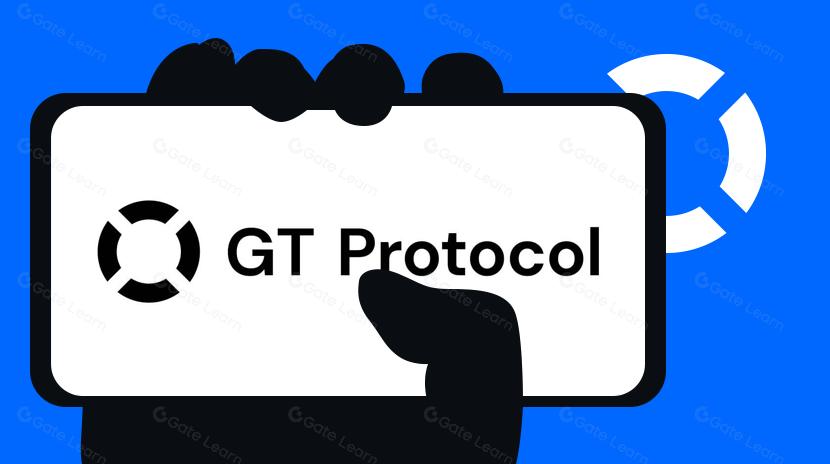
Tất cả những điều bạn cần biết về GT-Giao thức
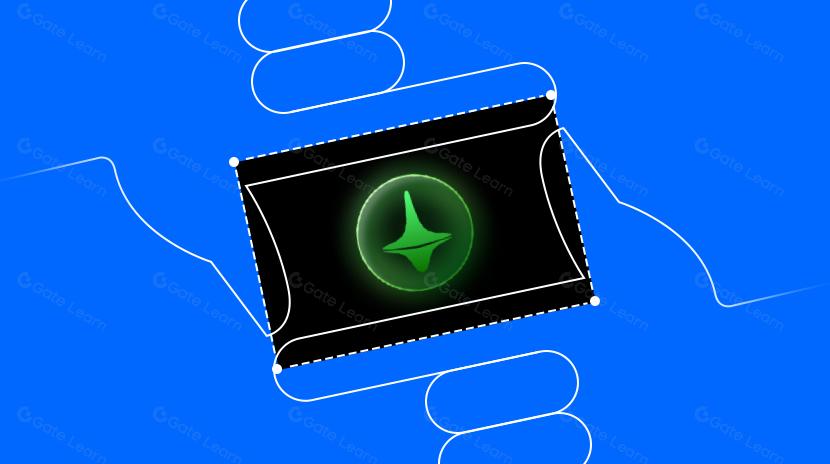
Tars AI là gì? Khám phá Tương lai của AI và tích hợp Web3

Sentient: Kết hợp những mô hình AI Mở và Đóng tốt nhất

Crypto Narratives là gì? Các Narratives hàng đầu cho năm 2025 (CẬP NHẬT)

The Airdrop Meta: a Lull in Performance or an Obituary?
